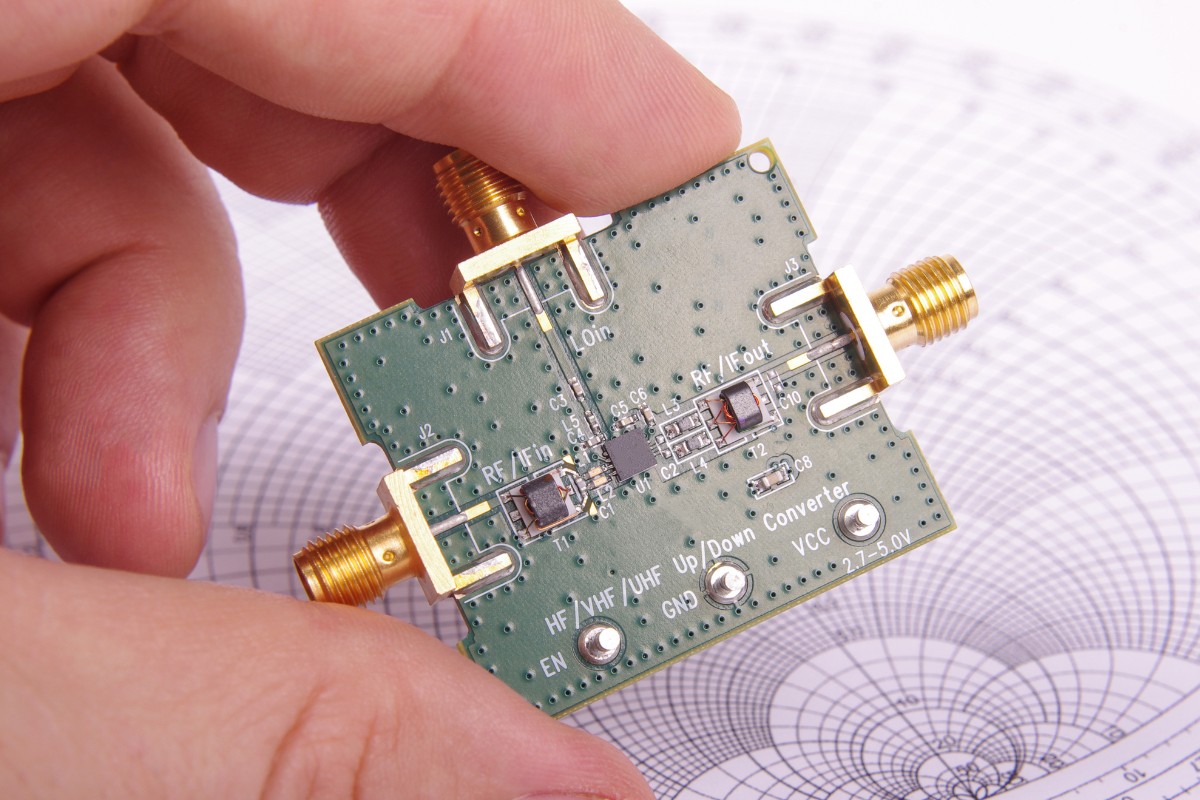1: 아이디어가 충분하지 않을 때
아이디어 구상부터 최종 테스트 및 제품 검증에 이르기까지 제품 개발 전 과정을 안내해 드립니다.
모든 전자 제품은 아이디어에서 시작됩니다. 아이폰도 스티브 잡스의 머릿속에서 아이디어로 시작되었습니다. 하지만 많은 사람들이 훌륭한 아이디어를 가지고 있지만, 모두가 애플의 유명한 스마트폰과 같은 훌륭한 제품을 만드는 것은 아닙니다.
왜 이런 일이 발생할까요? 모든 기업가가 아이디어를 개발하는 데 필요한 리소스를 가지고 있는 것은 아니거나, 가지고 있지만 어떻게 사용해야 할지 모르기 때문입니다.
어떤 리소스를 말하는 건가요? 지식과 시간입니다.
지식
전자공학 학위는 필수는 아니지만 전자공학, 회로 설계, PCB 레이아웃, 펌웨어 및 소프트웨어 개발, 기계 설계에 대한 배경 지식이 필요합니다. 기술이 빠르게 발전함에 따라 새로운 디바이스, 프로그래밍 언어, 5G, BLE, LoraWAN 등의 통신 네트워크를 최신 상태로 유지하는 것은 하드웨어 디자인에 종사하는 모든 사람에게 필수입니다.
시간
기업가가 가진 가장 소중한 자산 중 하나이므로 현명하게 사용해야 하며, 제품 개발 중에는 마케팅, 자재 조달, 연구 등 많은 일이 동시에 진행됩니다. 그리고 PCB 레이아웃, 올바른 PCB 제조업체 선택, 프로토타입 테스트, 펌웨어 개발 또는 인클로저 설계와 같은 모든 작업을 완료할 시간을 찾기 위해 고군분투할 수도 있습니다.
성공적인 기업가들은 이러한 리소스를 어떻게 활용할까요? 계속 읽어보세요.
2: 펜과 종이, 브레드보드 준비하기
머릿속의 아이디어가 저절로 현실화되지는 않습니다. 펜과 종이를 들고 회로도를 그리기 시작해야 합니다. 아니면 누군가가 대신 해줄 수도 있습니다.
많은 창업가들이 회로 설계에 대한 지식이 없거나 적절한 엔지니어링 파트너를 찾을 수 있는 네트워크가 부족하기 때문에 회로 설계는 하드웨어 설계 프로세스의 첫 번째 필터라고 할 수 있습니다. 이러한 상황에서 회로 설계를 배워야 하지만 그럴 시간이 없거나 단순히 전자 설계가 자신의 전공이 아니라면 어떻게 될까요?
걱정할 필요가 없습니다. 관련 경험이 풍부한 회로 및 전자 설계 전문 설계 회사에 언제든지 연락할 수 있습니다. 이렇게 하면 단기간에 작업을 완료할 수 있는 전문가에게 프로세스를 맡길 수 있으므로 마케팅, 투자자 찾기 및 기타 비즈니스 관련 활동에 집중할 수 있습니다.
회로 설계 단계의 결과물은 손으로 스케치한 회로도일지라도 회로도가 될 수 있습니다. 이 단계에서도 브레드보드를 사용하여 빠른 개념 증명을 수행할 수 있습니다.
회로 설계 단계를 파악했다면, 이제 이 모든 정보를 컴퓨터 프로그램에 입력하여 제품의 디지털 회로도를 생성할 수 있는 PCB 설계 및 레이아웃 프로세스를 시작할 차례입니다.
3: PCB 레이아웃 실습
이 시점에서 디자인의 기능적 동작에 대한 청사진과 초기 검증을 마쳤습니다. 그렇다면 다음은 무엇일까요? 현재 가지고 있는 것을 실제 PCB로 변환하려면 어떻게 해야 할까요? 먼저, 제작 및 조립 파일이 필수적이라는 것을 알아야 합니다.
제작 및 조립 파일에는 PCB 하우스가 보드를 만드는 데 필요한 모든 데이터가 포함되어 있지만, 이러한 파일을 생성하려면 회로도 캡처 및 PCB 레이아웃을 수행할 수 있는 컴퓨터 프로그램이 필요합니다. 이 소프트웨어 패키지를 CAD 소프트웨어라고 합니다. 시중에는 여러 가지 옵션이 있습니다. 일부는 무료이지만 기능이 제한되어 있고, 더 강력한 옵션은 유료 라이선스가 필요하므로 기업가에게는 그만한 가치가 없는 추가 개발 비용이 발생할 수 있습니다.
또한 PCB 레이아웃 단계에서는 라우팅 기술, 적절한 부품 배치, 전자기 간섭 및 노이즈 감소에 대한 고려 사항 등 경험을 통해서만 습득할 수 있는 일련의 기술과 모범 사례가 필요합니다. PC 마더보드나 고속 장치와 같은 복잡한 보드에는 훨씬 더 높은 수준의 전문성이 필요합니다. 따라서 PCB 레이아웃을 직접 수행하는 어려운 길을 걷기로 결정했다면, 수천 달러를 절약하여 적절한 CAD 소프트웨어를 구입하고 시간을 들여 이 소프트웨어를 배우고 PCB 설계 기술을 개발하여 연마하는 두 가지 중요한 과제에 직면하게 될 것입니다.
요약하자면, 고품질의 최종 제품을 제공하려면 이 단계는 숙련된 전문가가 수행해야 합니다. 귀사에 사내 엔지니어링 부서가 없는 경우 PCB 설계 서비스를 제공할 수 있습니다.
PCB가 설계되고 제작 및 조립 파일이 생성되면 보드를 제작할 준비가 된 것입니다!
4: 공급업체를 찾을 시간
PCB 레이아웃이 완성되면 다음 단계는 설계를 검증하고 기능 테스트를 수행할 수 있는 실제 장치로 변환하는 것입니다. 고려해야 할 변수가 많고 극복해야 할 장벽이 많기 때문에 이 작업은 압도적인 작업이 될 수 있습니다.
변수
각 전자 설계는 서로 다르므로 특정 사양이 필요합니다. 예를 들어 레이어 수, 트레이스 너비/간격 또는 구멍 크기는 제조 단계로 넘어갈 때 고려해야 할 사양 중 일부에 불과합니다. 일부 부품은 너무 작아서 모든 장비가 처리할 수 없기 때문에 조립 시에도 부품의 크기가 중요합니다. 보드가 얼마나 복잡한지에 따라 요구 사항에 더 적합한 여러 공급업체를 고려해야 할 수도 있습니다. 단순한 디자인의 경우 품질이 우수하고 처리 시간이 빠른 협력업체를 선호할 것입니다. 그러나 복잡한 디자인의 경우 공급업체의 역량을 가장 중요하게 고려해야 합니다.
또한 설계가 무선 주파수, 고속 회로 또는 군사/항공 우주 기술과 같은 매우 특정한 애플리케이션에 해당하는 경우, 계약업체 선정은 비즈니스 관점에서 사활이 걸린 결정입니다. 잘못된 PCB 하우스를 선택하면 제품의 미래가 위태로워질 수 있습니다.
장벽
한때 미국에서는 PCB 산업이 거대했지만, 오늘날 대부분의 대형 업체는 해외에 있으며 중국, 대만, 인도가 인쇄 회로의 주요 생산지입니다. 이들 국가의 낮은 인건비가 이러한 추세의 주된 요인이며, 이제 아시아 지역의 PCB 제조업체나 조립업체에 연락하면 미국에서 PCB를 제작할 때 지불해야 하는 비용의 일부만 지불하면 PCB 배치를 얻을 수 있습니다.
하지만 모든 것이 완벽하지는 않습니다. 미국은 운송 시간이 길고 세관 지연이 없기 때문에 리드 타임이 확실히 짧습니다. 또한 아시아와 미국 간의 시차 때문에 간단한 견적 및 주문 절차가 일주일이 걸리는 고문으로 변할 수 있으며, 언어 장벽으로 인해 사소한 세부 사항을 확인하기 위해 이메일과 전화를 주고받으며 일을 더욱 복잡하게 만드는 경우도 있습니다.
5: 펌웨어, 테스트, 기계 설계
이 시점에서 완전히 조립된 회로 기판을 손에 쥐고 프로그래밍(필요한 경우)과 테스트를 위한 프로토타입을 준비해야 합니다. 하지만 장비, 지식, 시간이 없거나 전문 전자제품 디자이너가 대신 해주는 것이 더 안전하다고 생각한다면 어떻게 해야 할까요?
유니티는 펌웨어 개발, 테스트, 인클로저 설계 등 최종 제품 출시라는 목표를 달성하는 데 중요한 추가 서비스를 제공할 수 있는 도구를 보유하고 있습니다.
오늘날 대부분의 전자 제품은 디지털화되어 있으며 약간의 프로그래밍이 필요합니다. 임베디드 개발 및 마이크로컨트롤러에 대한 풍부한 경험을 바탕으로 이를 수행할 수 있습니다.
테스트는 제품이 의도한 대로 작동하는지 확인하기 위해 중요합니다. 디자인의 올바른 동작을 보장하기 위해 테스트 절차를 수행할 수 있습니다.
마지막으로 제품을 판매할 계획이라면 환경과 기계적 충격으로부터 제품을 보호할 수 있는 인클로저가 필요합니다. 이 작업도 기꺼이 도와드리겠습니다.
아이디어를 실제 제품으로 전환하는 데 필요한 모든 단계에 대한 이 시리즈 기사가 도움이 되셨기를 바라며, 이 시리즈에 설명된 서비스에 관심이 있으시면 주저하지 마시고 언제든지 문의해 주세요. 저희는 여러분을 돕는 것이 저희의 임무입니다! 저희의 주요 목표는 놀라운 아이디어를 가진 중소기업, 기업가들이 이를 실현할 수 있는 도약점이 필요한 중소기업을 돕는 것입니다.
